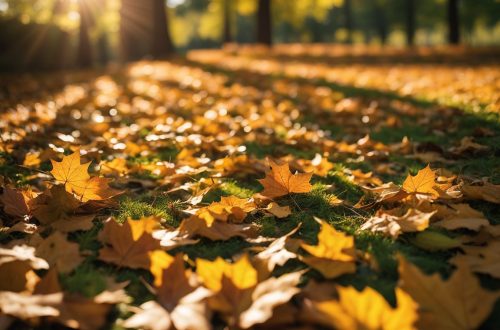Best Time of Year to Remove Moss from Roof: Expert Tips!
The best time to remove moss from your roof is during the dry season in late spring. This is when moss is actively growing and easier to remove.
Moss can damage your roof if left untreated, leading to costly repairs. Removing moss promptly helps maintain the integrity of your roof and prevents further issues. Regular maintenance and timely moss removal can prolong the lifespan of your roof and keep it looking its best.
It’s essential to address moss growth promptly to prevent any potential damage and keep your roof in top condition.
Introduction To Roof Moss Removal
Optimal period for roof moss removal is during dry months like late spring or early summer. This timing ensures effective moss elimination and prevents regrowth, safeguarding your roof’s longevity. Regular removal helps maintain a clean and moss-free roof year-round.
Why Moss Removal Is Crucial
Moss on roofs can cause damage to shingles and underlying structure.
Prevent leaks and extend roof lifespan by removing moss regularly.
Risks Of Ignoring Moss
Ignoring moss can lead to water damage, mold growth, and roof deterioration.
Protect your investment by addressing moss promptly.
Identifying The Moss Problem
Identifying the moss problem on your roof is essential in determining the best time of year to remove it. Moss on roofs can cause significant damage and reduce the lifespan of your roof. Therefore, it’s crucial to be aware of the signs your roof needs attention and the types of moss that grow on roofs.
Types Of Moss On Roofs
There are different types of moss that can grow on roofs, but the most common ones include:
| Moss Type | Description |
|---|---|
| Feather Moss | It has a feathery appearance and grows in damp areas with high humidity. |
| Sheet Moss | It forms a dense mat and grows in areas with low sunlight and high moisture. |
| Cushion Moss | It forms a cushion-like structure and grows in areas with high moisture and low sunlight. |
Signs Your Roof Needs Attention
Here are the signs that your roof needs attention:
- Presence of moss, algae, or lichen on the roof
- Stains or discoloration on the roof
- Loose or missing shingles
- Cracked or broken tiles
- Water stains or leaks in the attic or ceiling
It’s recommended to inspect your roof regularly, especially after a storm or during the fall season when leaves and debris can accumulate on the roof. If you notice any of the above signs, it’s best to address the issue as soon as possible.
The Seasonal Impact On Moss Growth
How Seasons Affect Moss
In colder months, moss growth slows due to less sunlight and lower temperatures.
Ideal Conditions For Moss Proliferation
Moss thrives in damp, shaded areas with poor airflow and acidic conditions.
Optimal Times For Moss Removal
Moss on a roof not only looks unsightly, but it can also cause damage to the shingles, leading to costly repairs. Understanding the optimal times for moss removal is crucial to maintaining a healthy and long-lasting roof. By addressing the moss growth at the right times, homeowners can ensure the longevity of their roofs and prevent potential damage.
Best Seasons To Clean Your Roof
Spring and fall are the best seasons to clean your roof and remove moss. During these times, the weather is typically cooler and more favorable for working on outdoor projects. Additionally, these seasons provide the perfect conditions for treatment to effectively combat moss growth.
Timing Removal For Roof Longevity
Removing moss from your roof at the right time not only enhances the appearance of your home, but also prolongs the life of your roof. Regular inspections and timely removal of moss can prevent the growth from causing damage to the shingles, ultimately extending the longevity of your roof.
Weather Considerations For Moss Removal
When planning to remove moss from your roof, it’s crucial to consider the weather conditions. The time of year can significantly impact the effectiveness and safety of moss removal. Here’s a closer look at the weather considerations for moss removal, including the impact of weather on cleaning and safety concerns.
Impact Of Weather On Cleaning
Weather plays a crucial role in the effectiveness of moss removal from roofs. Ideally, choose a dry and mild day to undertake this task. Excessive moisture or rain can make the roof surface slippery, posing safety risks. Moreover, applying moss removal products or treatments during rainy or extremely humid conditions may hinder their effectiveness. Opt for a day with minimal wind, as strong gusts can make it challenging to apply and control the moss removal products.
Safety Concerns With Weather
Safety is paramount when removing moss from the roof, and weather conditions directly impact this aspect. Avoid moss removal during icy or frosty weather, as this poses a high risk of slipping and falling. High winds can also compromise safety, making it challenging to work on the roof. Furthermore, extreme heat can make the roof surface too hot to handle, increasing the risk of burns. Always prioritize safety by choosing a day with mild, dry conditions for moss removal.
Professional Vs. Diy Moss Removal
Moss on the roof can cause a range of issues, from roof damage to water leaks. When it comes to removing moss from your roof, you have two options: tackling the job yourself or calling in the professionals. Let’s take a look at the pros and cons of DIY moss removal and when it’s best to bring in the experts.
Pros And Cons Of Diy
DIY moss removal can be a cost-effective option for homeowners. It allows you to tackle the issue on your own schedule and can save you money on professional services. However, DIY methods may not always be as effective as professional treatments, and there is a risk of injury when working at heights. Additionally, improper removal techniques can lead to roof damage.
When To Call The Professionals
If your roof has extensive moss growth or if you’re not comfortable working at heights, it’s best to call in the professionals. Professional moss removal services have the expertise and equipment to safely and effectively remove moss from your roof. They can also offer preventative treatments to keep the moss from returning.
Preventive Measures And Maintenance
Maintaining a moss-free roof requires consistent preventive measures and regular maintenance. By implementing long-term prevention strategies and following a routine maintenance schedule, you can ensure your roof remains free of moss throughout the year.
Long-term Moss Prevention Strategies
1. Trim Overhanging Branches: Overhanging branches can create shaded, damp areas that are ideal for moss growth. Regularly trim branches to allow sunlight to reach the roof.
2. Install Zinc or Copper Strips: These metals, when installed near the roof ridge, release compounds that inhibit moss growth without harming the roof.
Regular Roof Maintenance Tips
1. Regular Inspections: Inspect the roof at least twice a year for any signs of moss growth or damage.
2. Proper Drainage: Ensure that gutters and downspouts are clear to prevent water from pooling on the roof.
3. Gentle Cleaning: Use a soft brush or low-pressure water to gently remove any small patches of moss that may have developed.
Environmental And Legal Considerations
Consider the environmental impact and legal regulations before removing moss from your roof. Assess the best time of year to ensure minimal disruption to local wildlife and compliance with any local restrictions. Consulting with a professional can help you navigate these considerations.
Eco-friendly Removal Methods
When it comes to removing moss from your roof, it’s important to consider the environmental impact of the methods you use. Some methods involve harsh chemicals that can harm plants and wildlife. To minimize your impact on the environment, consider using eco-friendly removal methods such as scraping, brushing, and pressure washing with plain water. These methods are effective and won’t harm the environment.Understanding Local Regulations
Before you start removing moss from your roof, it’s important to understand the local regulations that apply to your area. Some cities and towns have restrictions on the use of certain chemicals, while others may require permits for pressure washing. Make sure you know what regulations apply to your area before you begin the removal process.Table: Local Regulations on Moss Removal
| City/Town | Chemical Restrictions | Permit Required for Pressure Washing |
|---|---|---|
| Seattle | Prohibited | Yes |
| Portland | Restricted | No |
| Vancouver | None | Yes |
Frequently Asked Questions
What Time Of Year Should I Put Moss Killer On My Roof?
Apply moss killer on your roof during early spring or late autumn for best results.
When Should I Remove Moss From My Roof?
Remove moss from your roof when it appears to prevent damage and maintain the roof’s integrity. Regularly cleaning moss helps extend the roof’s lifespan and prevents costly repairs.
What Time Of Year Is Best For Moss Removal?
The best time for moss removal is during the drier months, typically late spring or early summer. These times provide optimal conditions for effectively removing moss from outdoor surfaces.
Will Winter Kill Moss On Roof?
Winter will not necessarily kill moss on a roof, as it can survive cold temperatures. Regular maintenance is key.
Conclusion
To conclude, the best time of year to remove moss from your roof is during the dry season, typically in late spring or early summer. By addressing moss growth promptly, you can prevent potential damage and prolong the life of your roof.
Regular maintenance is key to a moss-free roof year-round.


